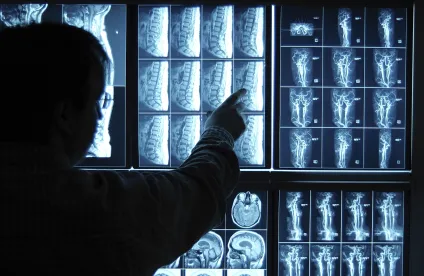In Genetic Techs Ltd v Merial LLC (Fed. Cir., April 8, 2016), the Federal Circuit invalidated yet another diagnostic patent for failing to satisfy 35 U.S.C. § 101 on the ground that the claims recite nothing more than a law of nature. The claim’s recitation of the term “to detect the allele” was insufficient to qualify the claims for eligibility because the clam element “merely asks the user to compare the non-coding sequences … amplified and analyzed with a library of non-coding sequences….” Slip Op. at 17.
Detecting “Junk” DNA
Genetic Technologies, Ltd. (“GTG”) sued Merial L.L.C. (“Merial”) and Bristol-Myers Squibb (together “Merial”) for infringing U.S. Patent No. 5,612,179 (“the ‘179 patent”) titled “Intron Sequence Analysis Method for Detection of Adjacent and Remote Locus Alleles as Haplotypes.” The district court granted Merial’s motions to dismiss for failure to state a claim and entered final judgment that claims 1-25 and 33-36 were ineligible for patenting under 35 U.S.C. § 101.
Claim 1 was stipulated by the parties to be representative:
-
A method for detection of at least one coding region allele of a multi-allelic genetic locus comprising: a) amplifying genomic DNA with a primer pair that spans a non-coding region sequence, said primer pair defining a DNA sequence which is in genetic linkage with said genetic locus and contains a sufficient number of non-coding region sequence nucleotides to produce an amplified DNA sequence characteristic of said allele; and b) analyzing the amplified DNA sequence to detect the allele.
Emphasis added.
In 1980, inventor Dr. Malcolm J. Simons discovered that certain DNA in coding regions correlated with non-coding regions between genes, and that these regions tend to be inherited together, “more often than probability would dictate.” Slip Op. 4. This linkage (termed linkage disequilibrium) can occur even though the two sequences are far apart on the chromosome. Id. Dr. Simons conceived that one could detect the coding regions of certain genes by searching for the non-coding regions linked to the coding regions. He exploited this discovery and according to GTG, the claimed methods provided advantages over the methods known in the art at the time the invention was made, e.g., the claimed methods allowed the analysis of large coding sequences. Slip Op. at 5.
Applying the Alice Two-Part Test
The court focused on the “two-part” test to analyze subject matter eligibility under 35 U.S.C. § 101, and as set forth by the Supreme Court in Alice Corp. Pty. Ltd. v. CLS Bank Int’l, 134 S. Ct. 2347, 2355 (2014):
“First, we determine whether the claims at issue are directed to one of those patent-ineligible concepts. If so, we then ask, what else is there in the claims before us? . . . We have described step two of this analysis as a search for an inventive concept – i.e., an element or combination of elements that is sufficient to ensure that the patent in practice amounts to significantly more than a patent upon the ineligible concept itself.”
Slip Op. at 8.
The court first determined that the claim did recite a law of nature – detecting a coding region of a genome by “amplifying and analyzing a linked non-coding region of that person’s genome.” Slip Op. at 8-9. Citing the similarity of the claims that failed in Mayoand Alice, and the court’s more recent ruling in Ariosa Diagnostics, Inc. v. Sequenom, Inc., 788 F.3d 1371 (Fed. Cir. 2015), the court stated that the claim focused on “a newly discovered fact about human biology (the linkage of coding and non-hyphen coding regions of DNA), involves no creation or alteration of DNA sequences, and does not purport to identify novel detection techniques.” Slip Op. at 11.
Having determined that the claim was directed to unpatentable subject matter, the court then proceeded to step 2 of the test, i.e., whether the claim provides something more than merely describing the ineligible concept. GTG argued that the step of analyzing the amplified DNA sequence to detect the allele satisfied the “something more” step of the test. The court disagreed, noting that the “amplifying” step was well known in the art at the time the invention was made. The step of “analyzing” the amplified DNA to provide information about the DNA was also known, according to the court, which noted that Applicants, during examination, admitted that no new methods to analyze DNA were invented. Slip Op. at 14.
GTG further argued that claim 1 provided more because the analysis limitation of claim 1 requires that the analysis step is performed on amplified, man-made non-coding DNA. This, GTG stated, was new because “no one had before analyzed man-made non-coding DNA in order to detect a coding region allele.” Slip Op. at 16. The Federal Circuit disagreed, stating that the analysis step was a mental process step that can be performed in the human mind. Citing Cyborsource Corp. v. Retail Decisions, Inc., 654 F.3d 1366 (Fed. Cir. 2011), the court noted that methods that can be performed entirely in the human mind are unpatentable because they are the types of “basic tools and scientific and technical work that are to remain free to all men and reserved to none.” Slip Op. at 16. In summing up their decision the court stated:
“To be sure, it seems to be true, as GTG alleges, that at the time the ‘179 patent was filed, no one was ‘using the non-coding sequence as a surrogate marker for the coding region allele’. . . But the novelty of looking to non-coding DNA to detect a coding region allele of interest resides in the novelty of the newly discovered natural law of linkage disequilibrium between coding and non-coding regions and adds little more than a restatement of the natural law itself.”
Slip Op. at 18-19.
Lessons Learned
While the court here held unpatentable yet another diagnostic method patent that embodies a new, useful and valuable application of a significant scientific discovery, the court’s opinion does provide several useful tips for determining if a diagnostic method claim could pass the Alice two-part test. The court is more likely to find a method patent eligible if the claim recites the use of a “new” technology, not merely the application of a known technique to a newly discovered natural phenomenon. The court also suggests that if the method requires the modification or creation of a new naturally-derived product, the claim also may be patent eligible.




 />i
/>i

